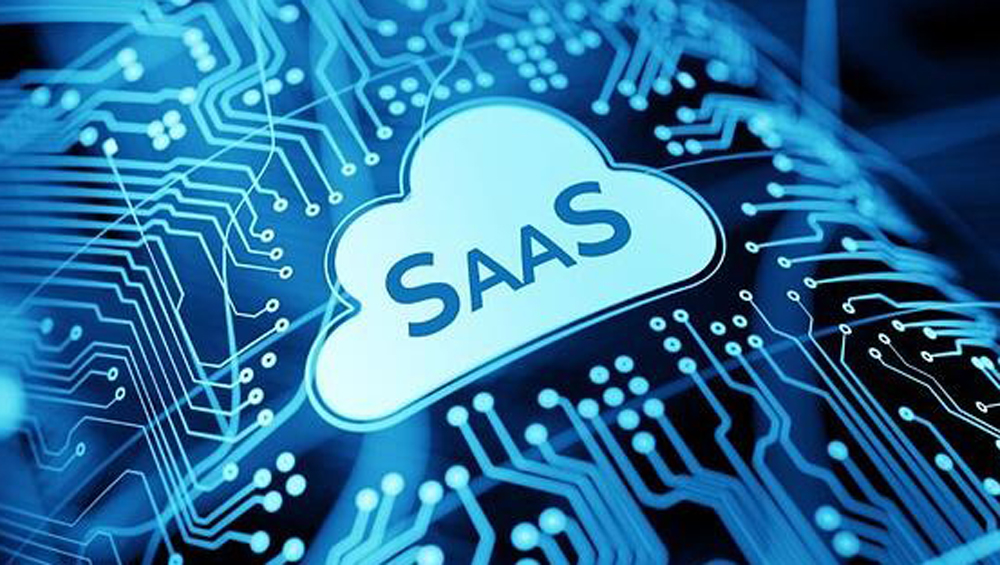
Broadcasters To Vendors: Wait, Not So SaaS

At the IBC show in Amsterdam next month it won’t be hard to find vendors selling products on a Software-as-a-Service, or SaaS, basis. As the media technology industry has steadily shifted from hardware to software products over the past two decades, broadcasters have grown far more open to buying technology on an operating expense or “opex” basis, as a subscription or rental, instead of purchasing them in the traditional capital investment model (“capex”).
The recent explosion in cloud technology, which is inherently opex-based, has only strengthened this trend. Legacy vendors like Imagine and Grass Valley as well as upstarts like Amagi and Singular.live all sell SaaS products that are designed to run on public cloud platforms. And the shift to remote workflows during the COVID-19 pandemic has many broadcasters rethinking their legacy plants and considering replacing much of their on-premise hardware with cloud infrastructure, cutting their real estate and energy costs in the process.
True SaaS
But conversations with broadcasters and vendors suggest that despite all the buzz over SaaS and usage-based pricing, the capex model is still very much alive. And the very definition of what SaaS actually is varies depending on who you’re talking to.
“We don’t even have great agreement on the definition of SaaS,” says Josh Stinehour, principal analyst for research firm Devoncroft Partners. “For some people, it’s just that I’m going to bill you in 36-month increments versus charging you upfront, but I’m delivering the same thing.”
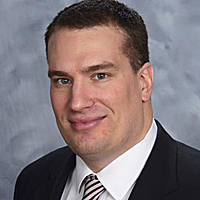
Josh Stinehour
To Stinehour, that is definitely not true SaaS. Instead, he said that SaaS means software running on public cloud infrastructure, not on-premise hardware; that the product is “vanilla,” or standardized, and is fairly turnkey to use; that it is “multitenant,” meaning that multiple customers are all using the same software on the same chunk (or “instance”) of cloud computing; and that the customer has a “proper subscription to it,” on a month-to-month or 12-month basis.
Adobe Creative Cloud software, which can be accessed via any web browser, is a classic example of SaaS, Stinehour says. Another is file transfer specialist Signiant and its Media Shuttle product.
“You should be using something that’s multitenant, so the upgrades of the functionality are invisible to you and accrue to you, and there is a large base of technology that you’re leveraging” Stinehour says. “That is an important piece. If someone comes in with a MAM system and says this is the basis we’re going to charge for it, they’ll install it on-prem and customize it to me, and then charge me over three years, that’s not SaaS.”
Economies Of Scale
The benefits of the multitenant approach are why Signiant decided to shift its business model from traditional capex to SaaS starting back in 2012, says Signiant CEO Margaret Craig. At that time Signiant only had large enterprise customers, as its software was difficult and expensive to deploy. Taking its technology to the public cloud would give it economies of scale that would allow it to broaden its base and go downmarket to sell the same product to a small post house as it sold to a media conglomerate like Viacom (now Paramount Global).
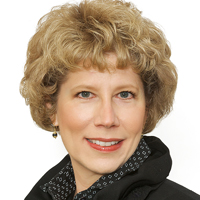
Margaret Craig
Craig notes some vendors will operate software in the cloud but run a different instance for each customer and allow customization. Signiant instead is very focused on a standardized, out-of-the box multitenant approach, though Media Shuttle can be customized somewhat through software APIs.
“We’re not saying everybody uses exactly the same thing,” Craig says. “It’s that everybody uses mostly the same thing and gets those economies of scale, and then use APIs to get that last 10% of customization.”
Tough Transitions
The transition to a SaaS model was “excruciating,” Craig admits, as there is no way to make a wholesale shift from capex to opex without several years of declining revenues. It required remaking every part of the company, including the relationship with customers. “Whale hunting” in the sales process became discouraged.
“It changes from sort of throwing something over the wall, to now you are mutually dependent on each other,” she says. “I have to demonstrate value so you renew next year.”
In making the transition to SaaS, Signiant was fortunate to have sophisticated venture capital investors who understood the systemic changes that media technology was undergoing. Customers also had to be willing to accept a more standardized product, which she says the industry is now finally ready to do.
“People are letting go of the whole ‘special snowflake’ thing, and saying OK, if I can buy it out of the box, I should do that,” she says.
While the control plane for Media Shuttle is fully based in the AWS cloud, the entire system could be considered a hybrid as Signiant attaches to customer storage on both ends. Over half of that storage today is still on-premise. Most Signiant customers purchase Media Shuttle through an annual subscription as opposed to pay-as-you go, Craig says, as “in general, people don’t really want pay-as-you-go on a long-term basis for something they know they need.”
Weaning Off Capex
Zixi, which specializes in linear IP program distribution such as replacing C-band satellite feeds, has been selling on a SaaS basis since 2017. It no longer sells perpetual licenses, although there are a few legacy customers that still have them.
“We had to wean ourselves off of capex. It’s not an easy thing,” says Zixi Executive Chairman and CEO Gordon Brooks. “But the reality is capex is a race to the bottom. It’s hard to run a business that way.”

Gordon Brooks
Zixi has branded its SaaS distribution platform “ZaaS,” for “Zixi as a Service,” and its SaaS-based ZenMaster control plane provides managed encoding, telemetry and orchestration. The company really started pushing ZaaS about a year ago, and about 25% of existing customers are on ZaaS today. Sixty to seventy percent of its sales pipeline for new customers is also ZaaS.
“If it’s our SaaS environment, we control versioning, we control configuration, we control the networks for redundancy, and we give high-end SLAs [service level agreements],” Brooks says.
Zixi also offers customers the option to run its software in their own cloud environment on an opex basis, which is basically an annual recurring fee. In that case, it doesn’t provide SLAs.
“It’s usage-based,” Brooks says. “How we price is minimum commitments. The bigger your minimum annual commitment, the more we can do on the price when you go over your minimum commitment. Then you pay overages.”
Another pure SaaS vendor is Singular.live, which sells template-based graphics that are accessible through any web browser. Founded in January 2019 by veterans of Vizrt and Reality Check Systems, the company sells free, pro and enterprise-level accounts on a monthly basis. So far it is has signed up 16,000 users, including U.S. station groups E.W. Scripps and Gray. The company is also in discussions with consumer electronics manufacturers about licensing its software for object-oriented, personalized graphics that can be rendered directly on a smart TV set.
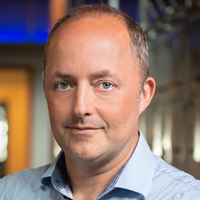
Mike Ward
“Singular is a platform,” says Mike Ward, head of marketing for Singular.live. “We’ve got a full authoring environment, and anyone can go in there and completely build their own graphics from scratch, and they can do that themselves. We also have a template library with over 100 different templates, and they can customize those if they find something they like.”
Enterprise accounts like Gray, which has rolled Singular out across 25 to 30 stations, get a certain number of outputs and a higher level of support. For that Singular.live charges a premium compared to Pro accounts, but Ward says it is still a “fraction” of the cost of traditional graphics vendors. The company has also assembled some 75 third-party service providers for enterprise customers who want to outsource their graphics creation, ranging from freelance graphics operators to production companies like Sunset + Vine.
“The great beauty of working in the cloud in a SaaS environment, in a web browser, is anyone can work anywhere, and they are all up to date,” Ward says. “It opens up a lot of different opportunities. It means you can recruit people from anywhere you like. It also gives people the option of working wherever they want to work, which is increasingly something people are looking for in their careers.”
New Capex Approaches
While vendors like Zixi and Singular.live only sell on a SaaS basis, other broadcast suppliers have a variety of purchasing options. Compression vendor Ateme offers both capex and opex models to broadcasters looking to buy its encoding software, and the company is also about to launch a true SaaS service on the AWS cloud. Remi Beaudouin, chief strategy officer for Ateme, makes a simple distinction between capex and opex—if the customer will wind up owning the license at some point, it’s capex. Everything else is opex.
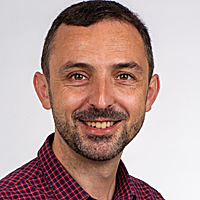
Remi Beaudouin
About 40% of Ateme’s business still consists of traditional capex deals where the customer buys a perpetual license up front along with an annual service contract. Roughly another 10% are opex deals, using either rental or subscription models that can range in term from an hour to several years. The rest of Ateme’s customers are signed to multiyear deals that are a bit of a hybrid between capex and opex. In those agreements a customer pays an annual fee over a period of two to five years, and at the end of the term it then owns the license.
“At some point they own the license, we are just splitting the cost over a period of time with a multiyear contract,” Beaudouin says.
In both capex models, Ateme can provide the COTS hardware if a customer demands it. But most customers choose to deploy the Ateme software on their own validated hardware that they procure and run themselves. The same goes for the rental or subscription models.
The new SaaS offering is a different story, in that the customer will be renting both the software and hardware components from Ateme. The company will be controlling and managing the cloud-based infrastructure, but the end service will still be operated by the customer. (The Ateme SaaS software is designed to run on any public cloud platform and could also be deployed on Microsoft Azure or Google Cloud Platform.)
While previous capex installations might have offered some level of customization, the Ateme SaaS software will be standardized. That allows Ateme to use the multitenant approach with different customers while using the exact same encoding technology.
“That’s the change of mindset that we’re experiencing with our customers,” Beaudouin says. “In the past, where they were using our solutions on their own infrastructure, they could have some customization of software, their own private version. When they move to the cloud, the way for us to have a profitable business is to have everybody aligned. And so, they have to accept that they’re running a standard version.”
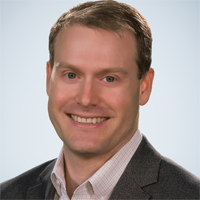
Mike Kralec
Sinclair Broadcast Group is one of the large broadcasters signed to a multiyear capex deal with Ateme. Sinclair SVP and CTO Mike Kralec said such deals are attractive from a financial point of view because they make forecasting more accurate over the long term.
“We know that the second-year payment will be fixed as will the third-, fourth- and fifth-year payment,” Kralec says. “It’s not millions of dollars up front, and then a support contract to accommodate their continued development. That is one thing that has been beneficial, is that the investment is spread out over a longer period of time.”
More Subscription Options
As for SaaS, Kralec likes the ability for Sinclair to consume only as much of a technology as it needs for a particular on-air product, and then wind down that usage as its business needs change. He says that ability to dynamically allocate and deallocate technology is something technology vendors need to focus on as broadcasters adopt more cloud-based tools.
But what Kralec doesn’t like about true SaaS services is that as a large media company Sinclair can generally get better pricing for cloud computing itself from the public cloud platforms than a software vendor can. That’s why Sinclair favors subscription-based licensing, buying software on a dynamic usage basis and then running it on its own cloud infrastructure. It did such an enterprise deal with Telestream late last year for transcoding for its content prep workflows which, for example, allows it to scale systems up as demand increased, and then back down again as it moderated.
“It’s not really capex per se,” Kralec says. “It’s more of a software-licensing agreement for their software that can be run cloud-based; it runs on our cloud infrastructure. It supports our Media Pipeline, which aggregates all of our content and handles metadata. It is completely dynamic, meaning it only has available resources to handle incoming items, and it will scale up as it needs resources, and it will scale it back down if it doesn’t need them.”

Jeff Birch
Jeff Birch, EVP engineering for the CBS Television Stations, says that the group is “just dipping its toe in the water” when it comes to SaaS while corporate parent Paramount Global is much farther down that road. He agrees with Stinehour’s definition of true SaaS as running in the public cloud. But he says some vendors are extending that concept to having on-premise hardware with associated software that customers can pay for on a month-to-month basis over a multi-year deal, as opposed to buying a perpetual license upfront with a capex investment.
“That, too, is what people are calling software as a service,” Birch says.
In that vein, Birch just inked a three-year subscription deal with Chyron for graphics systems at three CBS stations where Chyron is providing both the software and hardware on an opex basis. Birch, who still has concerns over connectivity when it comes to fully cloud-based systems, describes the deal as a “stopgap” and says Chyron’s long-term preference is to migrate the CBS stations to a cloud-based system. For now, it made financial sense.
“I did weeks and weeks of analysis between the traditional capital model and this model, and when I got to the end, this one was just a tad cheaper,” Birch says. “But the vendor was responsible to keep all the hardware and all of the software current for the term of the agreement. So, I didn’t have to purchase software service agreements anymore or hardware service agreements. That was all baked into the package.”
For its part, Chyron says the benefit of such subscription deals is that the customer is guaranteed continually updated software for Chyron’s Prime graphics platform, as well as hardware replacement if software development outpaces the capabilities of the servers it provides. The minimum term for such deals, which includes all software, hardware and service costs in one monthly price, is three years. But most customers are signing up for five-year terms, says Rob Ulke, VP of strategic accounts for Chyron.
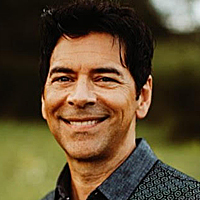
Rob Ulke
“This is a demand that customers are making of us, they know that technology is really evolving faster than a five-year life cycle that we’ve normally seen,” Ulke says. “They can get more options to do remote connectivity, whatever they’re looking for. It’s always in the latest and greatest feature sets.”
Ulke says that his sales have been split about 50/50 between capex and opex deals over the past year. He notes that at the NAB Show in April Chyron also launched a SaaS product, Chyron Live, which runs on the AWS platform. Chyron is also moving other products, such as its Axis graphics, to AWS.
Karl Paulsen, CTO of systems integrator Diversified, says that deals like the one CBS signed with Chyron give broadcasters increased flexibility in competitive product areas.
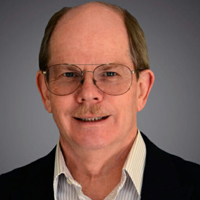
Karl Paulsen
“When you buy into a SaaS model or buy on a subscription-type basis, you can literally turn it off after a period of time, depending on what your contract is, and throw it away and replace it with something else,” Paulsen says. “Graphics is a good example of that. There’s so much competition. It’s not the same with something like intercom. I don’t think you buy a Riedel intercom for $1.5 million and then are thinking about replacing it in three years because Telos came out with a new model that’s a little snazzier.”
TAG V.S. sells a software-based monitoring system that will run on public cloud infrastructure and includes a host of features including probing and multiviewing. All of its features are included in a single product that can be used for live production, playout, traditional delivery and OTT applications, and its software licenses can be pooled within an organization and used for different applications depending on need, a strategy TAG calls “Zero Friction.”
TAG sells its technology in both opex and capex models. For capex, it charges an optional 20% annual “subscription” (i.e., service) fee against perpetual license purchases that guarantees customers continued software updates as it adds features. For opex, it charges 160% of the capex price (representing list price plus three years of the 20% subscription fee) and then prorates it against a given time period, anywhere from a day to a year.
The company has developed a sophisticated spreadsheet tool that helps customers project their usage and decide which model, capex or opex, makes the most financial sense for them. But TAG doesn’t sell its software in a SaaS model today, mainly because there isn’t much demand for it, says TAG “Zer0 Friction Officer” Kevin Joyce.
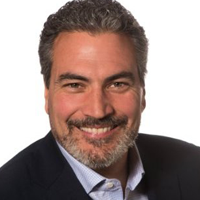
Kevin Joyce
“At the high end they’re buying the licenses,” Joyce says. “Very few of them want to do opex. Even Amazon Prime Video would rather buy the licenses than do opex, and that’s their whole business.”
Today, 60% of TAG’s revenues are from capex, while 40% are from opex; TAG includes the 20% subscription fees against the perpetual licenses it sells in its opex number. The privately-owned company is considering making a multimillion-dollar investment in creating its own SaaS offering, but Joyce isn’t sure when that will happen. He muses that the same type of subscription-based software model that Kralec prefers may be the optimal way to go if possible.
“That’s probably the ultimately most profitable model, is selling our software in an opex mode without any of the infrastructure that’s required for SaaS and the customer uses their infrastructure,” Joyce says. “You’ve got capex and SaaS. In the middle is where we’re sitting right now.”


































Comments (0)